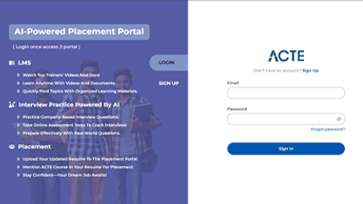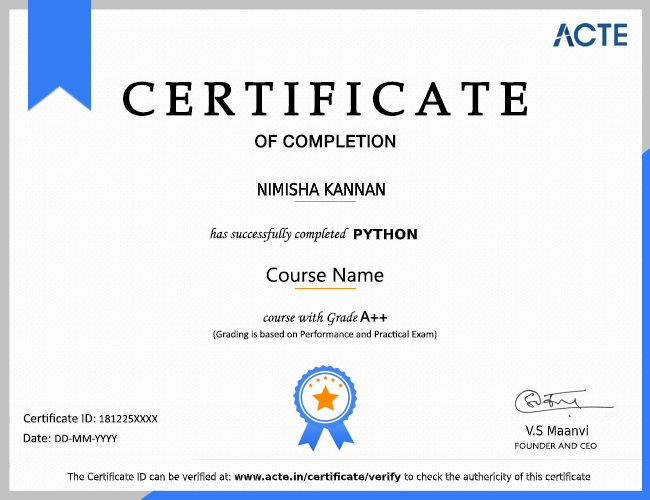- Define your platform. Decide which devices to target, which platforms (mobile, desktop, web), and which game engine/SDK/framework to use.
- Learn the skills.
- Implement something small.
- Join and engage in VR communities.
The average Virtual Reality salary in USA in Indian Rupees 75,07,012 per year or Rs. 3,849 per hour. Entry level positions start at Rs.18,62,663 per year while most experienced workers make up to Rs.1,27,61,921 per year.
A good virtual reality developer has to possess a certain set skills. Entrepreneurs & businesses seeking to hire VR developer should find a combination of a) software programming, b) 3D design skills, c) video/sound production skills, d) game development, e) UI/UX.
We are happy and proud to say that we have strong relationship with over 700+ small, mid-sized and MNCs. Many of these companies have openings for AR & VR Technologies analyst. Moreover, we have a very active placement cell that provides 100% placement assistance to our students. The cell also contributes by training students in mock interviews and discussions even after the course completion.
- Define your platform. Decide which devices to target, which platforms (mobile, desktop, web), and which game engine/SDK/framework to use.
-
- Learn the skills.
-
- Implement something small.
-
- Join and engage in VR communities.
-
So depending on how deep you want to go, you may have to learn about 3D modeling and/or scanning, 3D games engines, 360° photos and videos, maybe a little bit of math and geometry, programming languages like C/C++/C# and software development kits (SDKs), and how to design experiences for users in 3D.
According to a survey of app developers, C# and C/C++ are the most used programming languages for AR/VR development. This is not a concurrence. The most popular game engines are: Unity, which uses C# as its programming language.
Our courseware is designed to give a hands-on approach to the students in AR & VR Technologies. The course is made up of theoretical classes that teach the basics of each module followed by high-intensity practical sessions reflecting the current challenges and needs of the industry that will demand the students’ time and commitment.
By creating an immersive and interactive learning experience without the use of textbooks, AR and VR technology empowers learners to explore and learn at their own pace, thus stimulating learning and comprehension and enhances critical retention.
AR/VR. (Augmented Reality/Virtual Reality) Refers to computer-generated simulations that integrate the real world (AR) or are entirely self-contained (VR). AR applications let you move around in the real world.
The world of academe is evolving with digital transformation trends as curriculum adapts using technologies like AR/VR to reshapce curriculum.
- Healthcare.
- Air and space.
- Travel.
- Journalism.
- Marketing.
- Real estate.
- Automotive.
- Education.
Scope and Career Growth for AR and VR.
Augmented reality (AR) technology allows computer-generated data or imagery to overlay physical objects in real-time. It provides users with the information they need to perform tasks in the real world. AR works for hand in hand with displays, sensors, and embedded electronic components. An example of AR technology is smart glasses — a wearable computer that adds information to what the wearer sees, which allows surgeons to examine X-rays from multiple angles and view patient's bones in greater detail, among other uses.
Virtual reality (VR) provides users access to a fully immersive virtual environment where they can interact with objects similar to those in the real world. VR technology works on components such as gesture recognition, sensors, and embedded electronic components. An example of a VR product on the market today is Google Cardboard, which allows users to turn an Android phone into a VR headset using a simple fold-out cardboard viewer.
Rapid growth in these areas is tied to two main factors:
- Consumer interest and technology adoption. Many companies have been quick to recognize the potential for AR and VR technologies. Microsoft Corporation, Oculus VR, and Samsung Electronics are currently developing head-mounted displays (HMDs).
- In addition, media companies such as NBCUniversal, Turner Sports, and 20th Century Fox are experimenting with new formats and producing VR titles.
Future Applications & Uses
A broad range of industries will be influenced by advancements in AR and VR including consumer goods, entertainment, aerospace and defense, commercial, and medical.
Consumer Goods & Entertainment
In consumer goods, applications for augmented and virtual reality are endless. Not just in video games, which is the first thing most think of when picturing VR, but also in sectors such as sports, gaming, and entertainment applications. The uses for these technologies will open up brand new ways to purchase and experience entertainment.
Aerospace & Defense
AR and VR also play an important role in the defense sector. AR displays can provide operators with crucial parameters such as speed, altitude, direction, orientation, object and people markers, and even weapon information. Similarly, VR can be used for training and provide trainees with real-life situations they will come in contact with.
Commercial
When it comes to AR and VR, the commercial sector can be broken down into tourism and sightseeing, e-learning, and e-commerce and marketing. VR can create virtual environments that demonstrate and display products for promotion and branding, immersing consumers into the products. In addition, augmented reality can sell products in a whole new way, such as helping women see how the makeup will look on their skin without having to try it on. The potential for VR in education is also enormous and could transform the way students take online classes.
Medical
Lastly and perhaps most importantly, are the potential uses for AR and VR in the medical and healthcare industries. The medical vertical has one of the most important and practical applications of AR and VR such as helping doctors to conduct surgeries effectively, improving fitness, and teaching complex subjects to medical students. VR is also used in the treatment of pain, depression, and phobia. As time progresses, it is expected that healthcare applications will incorporate AR and VR more and more.
There are numerous AR/VR devices on the market, including headsets, tablets, smartphones, wearables, and consoles. Each device provides a different level of experience across the reality spectrum but also has specific limitations.
Many of the virtual reality headsets rely on smartphones to display the content. While these devices are a good introduction to VR, they lack the visual quality to deliver an immersive experience. Headsets tend to be bulky as well, making prolonged usage unlikely.
What is the future of our devices? How are they set to evolve with augmented and virtual reality? What if we could see through the screens we are surrounded by every day?
The augmented and virtual reality technologies will consolidate and come in two forms in the future: tethered systems and standalone units.
- Tethered systems will be comprised of a unit or wearable on the head, with a wire attached to a processing unit.
- Standalone units will house all systems—from display to processing—within the unit and be available as a wearable. We're already seeing early signs of these trends as manufacturers choose a mixture between standalone and tethered units. Although some standalone units are already available, these devices are more complex and difficult to implement.
Today, we're in a state of compromise with augmented and virtual reality devices. None of the existing systems give users a complete, boundless, and immersive experience. Most of the systems lack a natural, wide field of view (FOV), have limited display resolution, low brightness, short battery life, and lacking 3D sensing capabilities. It will be another three to five years before we will experience true, unconstrained AR/VR applications.
The AR/VR devices of the future will provide personalized, accessible, and well-designed experiences. As these elements take hold, a platform shift is imminent. With new, immersive AR capabilities, the form factor of our favorite consumer electronics will change and we'll never look back.































